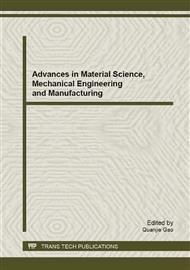p.547
p.552
p.556
p.561
p.566
p.571
p.579
p.585
p.591
Exergetic Cost Analysis of Marine Diesel Engine Waste Heat Recovery System Based on Matrix Model Thermo-Economics
Abstract:
Diesel engine is the main power of the marine vessel, its thermal efficiency is the highest in all thermodynamic engines, but still more than 50% of the energy is not being used, so making full use of the waste heat of the main diesel engine scientifically and effectively, not only reduce the fuel consumption and the shipping cost, but also reduce the value of the ship EEDI effectively. To be able to design and transform the green ship, thermodynamic analyzing of the ship power plant and master the energy utilization of each part is necessary. Raising the efficiency of an energy system is within the domain of thermodynamics. Raising the efficiency cost-effectively (thermo-economics) is a multi-disciplinary problem in which thermodynamics interfaces other disciplines of knowledge which in this particular case are design, manufacture and economics. In this paper, it introduces the analysis method of thermo-economics briefly, the thermal economic analysis of the marine diesel engine waste heat recovery system is taken based on matrix model thermo-economics, and the unit exergetic cost is calculated. Some thermal equipments of the system are showed with the result of the performance evaluation. The results shows that thermo-economics is a promising tool for the analysis of complex energy systems. This method also provides a great prospect for energy system optimizations.
Info:
Periodical:
Pages:
566-570
Citation:
Online since:
August 2013
Authors:
Price:
Сopyright:
© 2013 Trans Tech Publications Ltd. All Rights Reserved
Share:
Citation:


